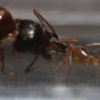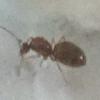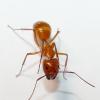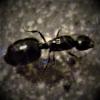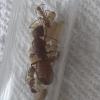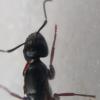@ConcordAntman It's not an exact science TBH... some people even skip their first years hibernation. I usually do 3-4mos, and play favorites a bit, as the more involved ants I may keep in hibernation a bit longer to give myself some time to prep. Also there's some variation in nature too (hence not an exact science) as cold weather doesn't start/stop predictably every year. For example I usually see Lasius as some of the very first, and last ants of the season foraging (long into October) if it's warm. While Camponotus I often see stop foraging in September. Outdoor temperatures affect things as well for some species, for example P. imparis, Aphaenogaster and Lasius are more apt to forage if Spring/Fall temps are warm enough while others are done for the season.
So if you have queens/colonies in test tubes, rapid temperature increases from cold -> hot will flood a test tube. I *try* to take them out first, and put them into the basement at 50sF. Once there for a few days, bring them upstairs. However even with this, I still had a few test tubes flood. I don't think the ants themselves really have an issue with the warm up TBH. Just be aware if the Camponotus pennsylvanicus are in full hibernation, it may take days to a week before the colony has woken up, so don't panic! People will freak out as their Camponotus queen looks dead or barely moving, and it can take while for them to fully wake up.
I'll be checking on mine this weekend, so hopefully no surprises ![]() I did notice what appeared to be a dead Tetramorium worker on top of one of the containers I removed with the dead Myrmica, so I am curious to see if one of the lids isn't on tight. I've been full on testing new nest designs for this Spring on the printer, hoping to have something.
I did notice what appeared to be a dead Tetramorium worker on top of one of the containers I removed with the dead Myrmica, so I am curious to see if one of the lids isn't on tight. I've been full on testing new nest designs for this Spring on the printer, hoping to have something.
@Nathant2131 I see you've been lurking, you keeping ants again? ![]()



